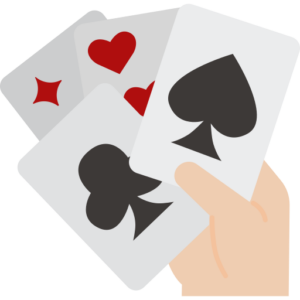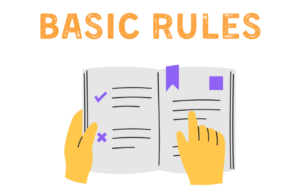Glossary Term
Full House
Full House
Used In: Poker


Introduction to Full House
Full House in poker represents a formidable hand, often associated with significant triumph at the tables. Comprising three cards of the same rank and a pair of another rank, it holds considerable strength in the hierarchy of poker hands. This article aims to provide a comprehensive understanding of Full House, covering its definition, formation, ranking, strategic considerations, and common variations. Regardless if you're a new player seeking to grasp the fundamentals or a high-roller looking to refine your strategy, delving into the intricacies of Full House can enhance your prowess in the game of poker.
Definition of Full House
![]()
![]()
How to Form a Full House
Forming a Full House in poker requires strategic maneuvering and a keen understanding of the game's mechanics. The process begins with the selection of starting hands that possess the potential to develop into a Full House as the community cards are revealed. Players aim to acquire three cards of the same rank and a pair of another rank through a combination of hole cards and community cards. This can be achieved through various means, including pairing one of the hole cards with two community cards of the same rank, or by forming a pair with one hole card and two matching community cards. As the hand progresses through the betting rounds, players must assess the evolving board and adjust their strategy accordingly to maximize the likelihood of achieving a Full House. Patience, strategic foresight, and careful observation are key components in successfully forming this potent hand, elevating the player's chances of securing victory at the poker table.
Example of Full House
To illustrate the concept of a Full House in poker, consider the following scenario:
| Player | Hole Cards | Community Cards | Hand |
|---|---|---|---|
| A | KK | 8♠️ 8♣️ K♦️ 8♦️ | Full House, Kings over Eights (KKK88) |
| B | 8♠️ 8♣️ Q♠️ K♦️ 8♦️ | Full House, Queens over Eights (QQQ88) |
In this scenario, both Player A and Player B have formed a Full House, as they each possess three cards of the same rank (Kings for Player A and Queens for Player B) accompanied by a pair of eights from the community cards. However, Player A's hand outranks Player B's due to the higher ranking of Kings over Queens. This example highlights the dynamic nature of poker gameplay and the strategic importance of forming and maximizing the potential of a Full House to secure victory at the tables.
Ranking of Full House
In the hierarchy of poker hands, a Full House occupies a prestigious position, boasting formidable strength and strategic significance. When multiple players form a Full House in a game, the hand is ranked based on the value of the three matching cards, known as the “trips” or “set,” followed by the value of the pair. For example, a Full House with three Aces (AAA) and a pair of Kings (KK) would outrank a Full House with three Kings (KKK) and a pair of Aces (AA). In the rare event of a tie, where multiple players have Full Houses of the same rank, the pot is typically split evenly among the tied players. Understanding the ranking of Full House is essential for players to assess the strength of their hand relative to their opponents and make informed decisions during gameplay. By grasping the nuances of hand rankings, players can effectively leverage their Full House to dominate the competition and emerge victorious at the poker table.
| Full House | Example | Description |
|---|---|---|
| AAAKK | Three Aces and Two Kings | This Full House ranks higher than other Full Houses due to the presence of three Aces, followed by two Kings. |
| KKKAA | Three Kings and Two Aces | Although still a Full House, this hand ranks lower than AAAKK due to the value of the trips being Kings instead of Aces. |
| QQQJJ | Three Queens and Two Jacks | In this scenario, the Full House consists of three Queens and a pair of Jacks, ranking below hands with higher-ranked trips. |
| 88877 | Three Eights and Two Sevens | Despite not featuring high-ranking cards, this Full House still holds value, especially in situations where other players have |
Strategy Considerations
When playing with a Full House, strategic considerations become paramount in maximizing its potential and capitalizing on its strength. One key aspect to consider is the board texture and the likelihood of opponents having hands that can beat a Full House. If the board presents potential straight or flush possibilities, caution should be exercised, as these hands can potentially outrank a Full House. Conversely, in scenarios where the board appears dry and unlikely to complete strong hands, aggressive betting can be employed to extract maximum value from opponents with weaker holdings. Additionally, understanding opponents' betting patterns and tendencies can inform decision-making when holding a Full House. If opponents exhibit signs of strength through aggressive betting, it may be prudent to slow play and induce further action, whereas passive opponents may warrant more aggressive tactics to extract value. Balancing aggression with deception is key to effectively leveraging a Full House and maximizing profitability in poker gameplay.
Common Variations and Rules
While the basic concept of a Full House remains consistent across different variants of poker, variations in rules and gameplay can impact its formation and ranking. In community card games like Texas Hold'em and Omaha, players form a Full House using a combination of hole cards and community cards, whereas in draw poker variants, such as 5-Card Draw, players aim to draw specific cards to complete a Full House. Additionally, variations in hand-ranking rules may affect the strength and ranking of Full Houses in different games. For instance, in some variants, a Full House with higher-ranking trips may outrank others, while in others, the ranking of the pair may come into play. It's crucial for players to familiarize themselves with the specific rules of the poker variant they're playing to accurately assess the strength of their Full House and make informed decisions during gameplay.


Conclusion
In conclusion, the Full House stands as a testament to the strategic depth and complexity inherent in the game of poker. Its unique combination of three matching cards and a pair exemplifies the fusion of skill, intuition, and calculated risk-taking that defines successful gameplay. By mastering the formation, ranking, and strategic considerations associated with Full House hands, players can elevate their performance at the tables and increase their chances of success. As you continue your journey in the game of poker, may this article serve as a valuable resource, empowering you to harness the power of the Full House and emerge victorious.
The Top Online Casinos for Playing Poker
When seeking the top online casinos for playing poker, discerning players prioritize platforms that offer a seamless gaming experience, robust security measures, and a diverse selection of poker variants. Leading online casinos boast intuitive interfaces, cutting-edge software, and dedicated poker rooms, ensuring immersive gameplay for enthusiasts of all skill levels.
No results were found!


Author
Gabriela Kirilova | Content Optimization Director








